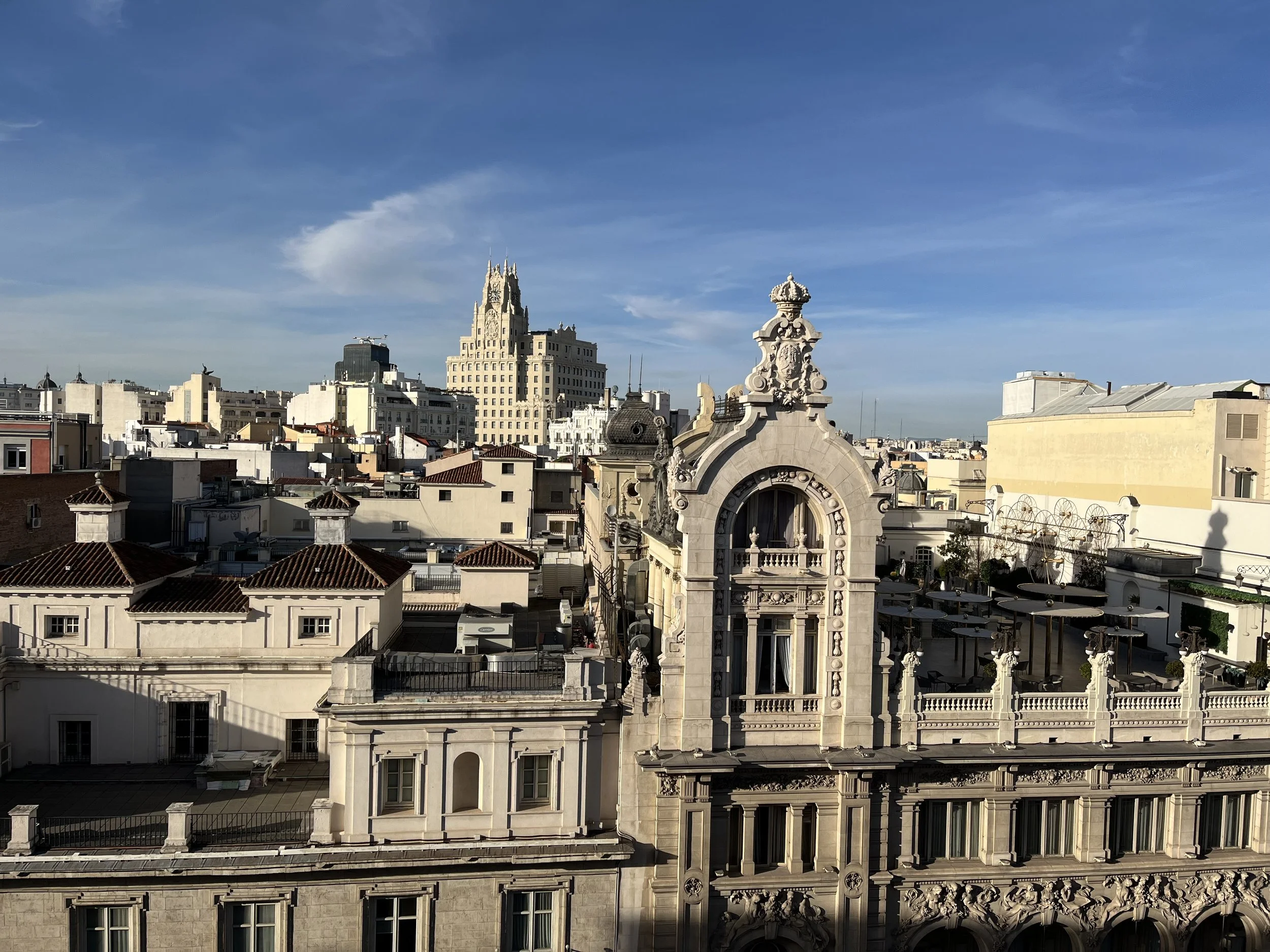Madrid is the only city in Spain that really feels big. Madrid is Spain’s capital and largest city, and has all the government agencies, corporate headquarters, and grand avenues that you might expect. Barcelona, with its beaches and relaxed atmosphere, never manages to really feel massive, and Seville, Valencia, or any of Spain’s other cities, though busy, would never be mistaken for Madrid.
In essence Madrid is a collection of small towns formed from a centuries-long exodus from the towns and villages in the rest of Spain, leading to neighborhoods, streets, bars, restaurants, shops and people that seem transplanted straight from Galicia, Andalucía, or the Basque Country. This duality makes Madrid a fascinating place to explore, cosmopolitan and traditional, urban yet yearning for the ancestral villages of the Spanish provinces.
The Centro district of Madrid includes most of the neighborhoods you’re likely to encounter when visiting Madrid, particularly if it is your first time. The most essential neighborhoods are Barrio de los Austrias, Barrio de las Letras, Chueca, La Latina, Lavapiés, and Malasaña.
1. Barrio de los Austrias
The oldest neighborhood of Madrid, the Barrio de los Austrias (also known as Madrid de los Austrias or Hapsburg Madrid) includes Madrid’s medieval core as well as the sections built by the Habsburg monarchs in the 16th and 17th centuries. Several of Madrid’s most famous historic sites lie here, including the Plaza Mayor, the Plaza de la Villa, and the Puerta del Sol. The bars and restaurants in the area are often crowded with visitors, particularly the Chocolatería San Ginés and the Mercado de San Miguel food hall, both of which are always filled to the brim. There are some interesting and unusual places hidden down the narrow streets, if you know where to look, such as Casa Paco, a traditional casa de comidas where Hemmingway used to go. Make sure to go to Plaza de la Paja on a sunny day to have a drink at the outdoor tables.
2. Barrio de las Letras
This is the district where Cervantes, Lope de Vega, and other literary luminaries once spent their time, hence the name “neighborhood of the letters.” It is bordered to the north by the Gran Vía, the east by the Parque del Retiro, and the southwest by Calle Atocha. Plaza Santa Ana is the central point, with outdoor terraces to have a drink or a bite. The narrow streets of Las Letras hold a selection of excellent tapas bars and restaurants, from traditional greats like Casa Alberto to new destinations like TriCiclo. There are also a number of cocktail bars and other nightlife spots located in the area. This is one of the best areas of Madrid to stay in, particularly since the Prado and Thyssen-Bornemisza Museums are close by.
See our blog post 4 Reasons to Have a Cocktail in Madrid, which highlights two cocktail bars in Las Letras district.
3. Chueca
Chueca is one of Madrid’s hottest neighborhoods, and for good reason. In the 1980s it became the center of Madrid’s burgeoning gay movement, and it remains so to this day. Chueca attracts people from all over Madrid to enjoy its incredible diversity of shops, bars, and restaurants. The Mercado de San Antón combines market stalls with eateries and a rooftop bar with views of the neighborhood. Make sure to stop in at Bodega Ángel Sierra for a vermouth in a truly unique spot.
4. La Latina
La Latina lies just south of the Barrio de los Austrias and can be considered a continuation of it in many ways. Like its neighbor it is one of Madrid’s oldest districts, but is very popular with young people and has many new bars and restaurants. Calle Cava Baja and Calle Cava Alta are essential for tapas in Madrid, and there are great late night spots extending through La Latina. On Sundays, the Rastro street market takes over much of the neighborhood, with sellers offering everything from umbrellas and memorabilia to antiques and paintings.
5. Lavapiés
Located between La Latina and Calle Atocha below Puerta del Sol, Lavapiés is a world away from its neighbors. Historically a working class neighborhood, in the last few decades Lavapiés has become home to an unlikely mix of countercultural youths and immigrants from all over the world. Here you will find art exhibits, street art, theaters, and literary cafes. The food of Lavapiés features fusion between Spanish cuisine and the cuisines of the world represented in the area. There are also a number of vintage Madrid bars and cafés preserved in the area. Lavapiés is also very convenient, close to the train station of Atocha and the Museo Reina Sofia.
6. Malasaña
Malasaña is a young and alternative district west of Chueca which shares some characteristics with its neighbor. Malasaña was very important during Madrid’s movida in the 1980s, with many of its bars and clubs dating to that period. Vintage shops and vegan restaurants by day, while by night bars of every stripe are on the menu, all overflowing with countless revellers. Bodega de la Ardosa old-school restaurant is a great place to start your night before venturing into one of the hotspots of Madrid’s legendary nightlife.

